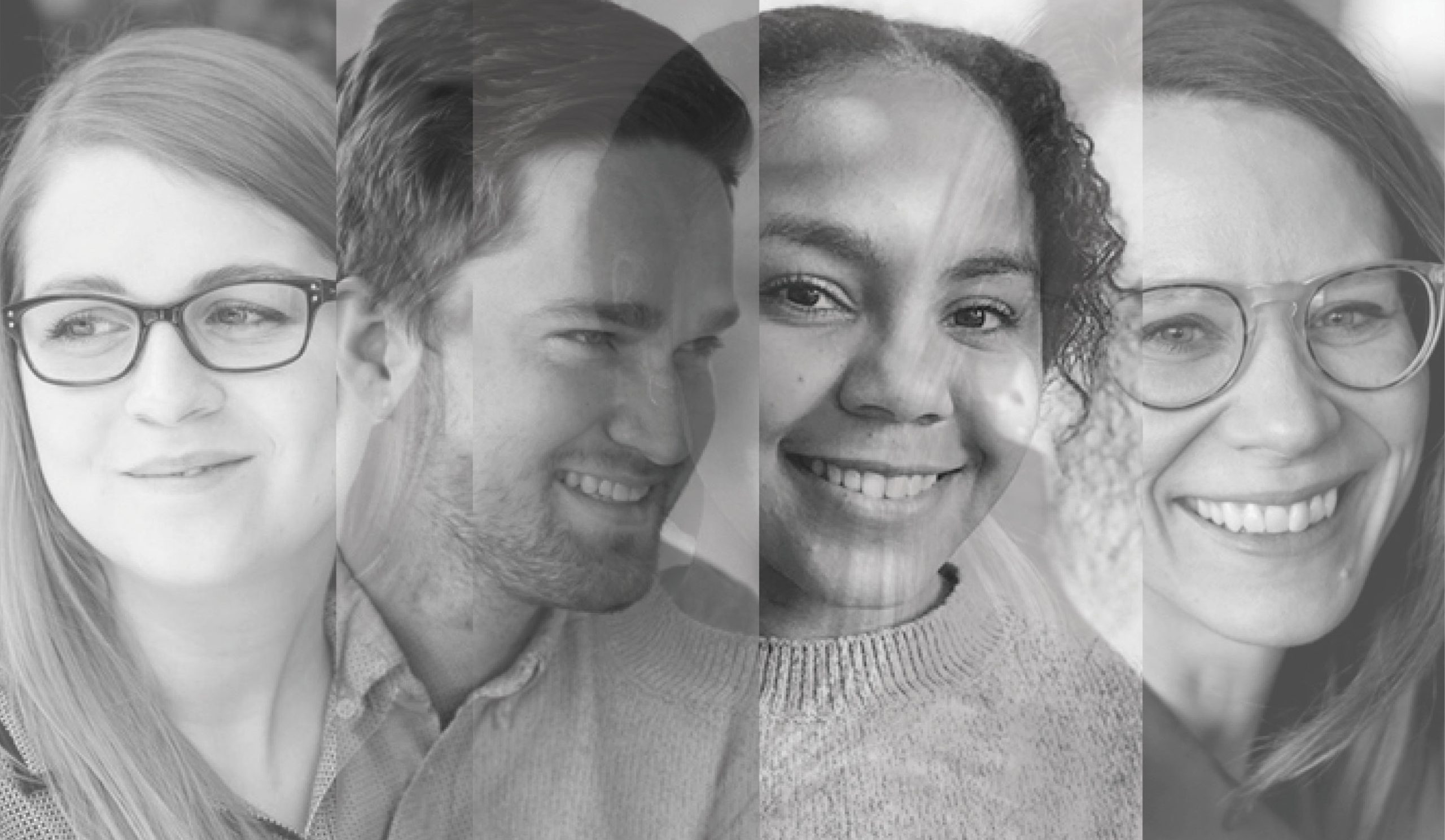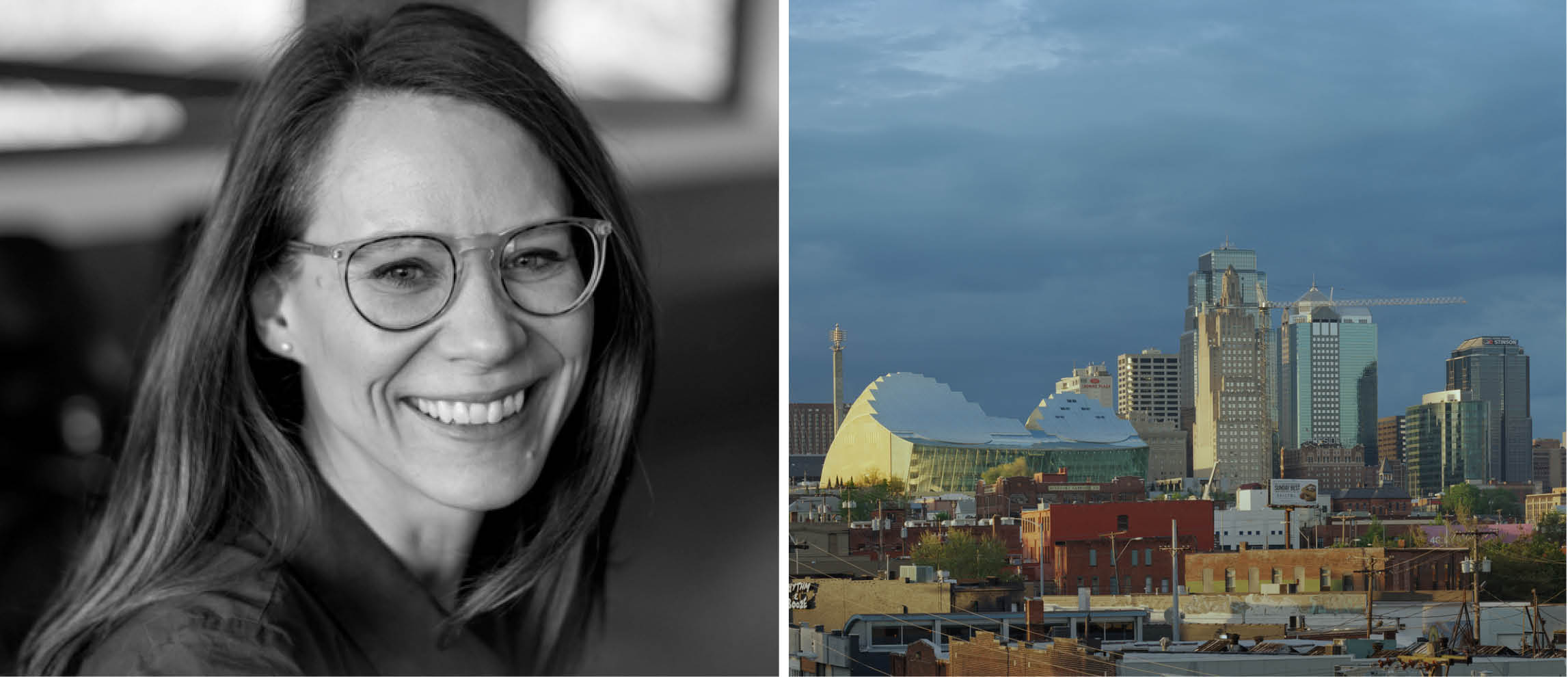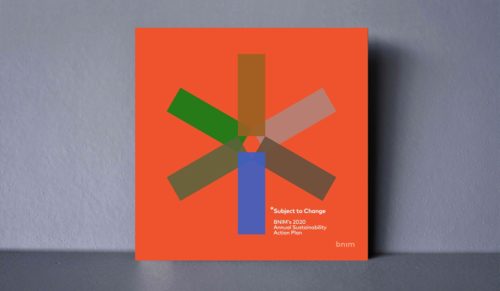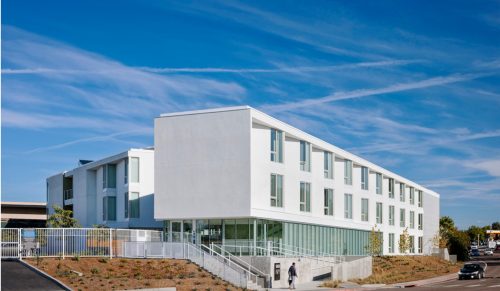Spotlight

Leadership Beyond Design – Q + A with BNIMers
Advocacy, community involvement, and thought leadership have shaped our practice for the better. We are a firm of design practitioners as well as community members, committed to inspiring change and enhancing the human condition. When our team members share their experiences from policy meetings, serving as board members, or volunteering, it opens up new perspectives and discussions of the challenges facing our communities and how we can create the most effective design solutions. In the profession, the work of our staff members is creating a strong foundation for positive change in architecture and design, addressing issues in climate action, equity and diversity, and community resilience.
We connected with several BNIMers this month to talk about the different ways they are helping shape design through their professional and community roles. In our Q&A session below, learn about their recent efforts and future goals focused on growing and supporting a diverse design community, advocating for collective climate action, creating supportive neighborhood facilities, and contributing to community leadership.
Diverse Design Community // Carleigh Pope, Assoc. AIA, NOMA
Carleigh Pope recently joined BNIM’s as a design team member in the Kansas City office. Carleigh is serving on the National Organization of Minority Architects Kansas City (NOMA KC) Executive Board for 2022 and is focused on growing diversity in the field of architecture, planning, and design.
As a member of the NOMAKC Executive Board for 2022, what are your upcoming goals for this year?
CP There are various initiatives we are working toward as an organization. Long term, we are thinking about the future of the profession, effectively, the future of the built environment. One of our jobs as design professionals is to create space for a range of people, therefore the profession becoming more reflective of those who they design for can only be seen as a positive shift. In the short term, we hope to get more students and design volunteers involved in our project pipeline camp this summer. In my position as Public Relations, my goal is to keep growing NOMAKC’s platform and outreach throughout the KC community.
Along with speaking to students, such as at the University Academy Career Day, what other outreach opportunities are you taking part in or hope to see?
CP The University Academy Career Day was a great experience. I was able to represent a demographic of the design field that isn’t always displayed for prospective students to see.
Within NOMAKC, we have various committees that are geared toward our working initiatives. Within that, there are groups that focus on aspects going back to our main mission ‘to champion diversity, multicultural design professionals and allied organizations who desire to influence the greater community by advancing the profile of minority design professionals and multicultural business interests. NOMAKC desires to be a unified force to enact change that enhances opportunities for the increased exposure and contribution of minority professionals.’ [VIA NOMAKC]
I hope to see more design professionals committing to involvement in NOMAKC. There are a range of commitment levels whether it’s occasional volunteering, serving on a panel, attending our different monthly meetings, etc.
The more support we have from those in the community, the more we can support each other professionally along with make a valuable impact on the lives of the students and broaden our reach.
Since you have started managing the NOMAKC social media as Public Relations Executive Board Member, how have you seen / hope to see engagement grow on those platforms?
CP Our Kansas City Chapter is only a few years old. The chapter worked through COVID, trying to build up our community without the ability to organize and gather in person. We have a lot of momentum as we were named small chapter of the year by the NOMA National Chapter. Those before me have done an excellent job at building momentum for our presence and engagement on social media.
In the few months that I have been in this position, I have been focused on building upon that momentum while also bringing a new perspective to how we engage and can enhance the design community and more specifically, the Kansas City Community.
Collective Climate Action // Joyce Raybuck, AIA, LEED AP

Joyce Raybuck is an Associate Principal in BNIM’s Kansas City office and co-leader of BNIM’s Sustainability Group. Joyce has helped champion and advocate for the adoption of the IECC 2021 energy code and Zero Code as an optional appendix in Kansas City, MO, to support the City’s efforts to become carbon neutral by 2040.
You have been actively involved in climate initiatives both within BNIM and in the architectural and design industry. Can you share about your recent efforts?
JR Because nearly 45% of carbon emissions in the U.S. come from the building sector, I knew one place I could push that would have a larger impact on decarbonization is stronger energy codes.
It really started back in 2019 when I was awarded funding from the Urban Sustainability Directors Network (USDN) to attend the 2019 IECC national conference in Las Vegas to testify at Public Hearings for improved energy efficiency in our building codes. It was here that many groups pushed to make the IECC 2021 substantially better than the 2018 code and were successful. After this experience, I knew I needed to push locally for adoption. It’s been a long road but we are making progress. I’ve been working with an incredible group including Jeremy Knoll and James Baker at BNIM, the KC Sierra Club and the Citizen’s Climate Lobby. Our collective group have been working together for over two years now on this effort to get Kansas City to adopt the latest energy code, the IECC 2021 with strengthening amendments as well as the Zero Code as an optional appendix.
We have given dozens of presentations on the IECC 2021 + Zero Code, formed a diverse network of allies and worked with our City Council to champion an ordinance for adoption. Our message has been clear, for the city to meet its climate commitments, they must align their building codes. This is not just about energy efficiency either…it is about people, human health, and promoting equity in the places we live and work.
We are hoping that it is going to be submitted to the City Council in the next few weeks for public comment, so that is exciting for us, our group, and our city.
What are critical steps that need to be taken on a firm-scale and on a collective industry-scale for climate action?
JR One of the things we’ve talked about as a critical next step is pushing for adoption of a Building Performance Standard. […] What it means is that existing buildings on a certain scale would be required to bring their buildings up to a more energy efficient standard. That might mean retrofitting windows; or replacing their mechanical systems — it could be a number of strategies to get them where they need to be. St. Louis adopted this a few years ago, and we are seeing more and more cities move in this urgent direction for decarbonization.
Recently, Mayor Lucas of KCMO was one of 33 mayors and governors who signed on to a National Building Performance Standards Coalition with a goal of advancing legislation by Earth Day 2024. We are seeing momentum in our region for decarbonization and need to keep pushing. In terms of critical steps on a firm-scale […], we know that in the next 10 years nearly 75% percent of the carbon emissions from new buildings will come from embodied carbon. Because we need to reduce carbon emissions rapidly to limit global warming to 1.5 degrees C (IPCC 2018 Report) over the remaining 6 years, this becomes a really important piece.
We’ve started setting aggressive goals and tracking the embodied carbon on all projects. This has been a crucial step in understanding where we are and where we need to go. Working with key structural partners, we’ve modified our concrete specifications to be performance based, as well as analyze structural options to reduce embodied carbon on our projects. We have seen improvements, but there’s still a lot of work to be done. We are committed to this pursuit and will be advocating on our projects, with industry partners and in the public realm to continue this important work for climate action.
Positive Neighborhood Impact // David Amstutz, AIA
David Amstutz recently joined BNIM as an interior architect. In his first major project initiative at BNIM, David is working with the design team and Reconciliation Services (RS) to renovate their existing facilities at 31st and Troost in Kansas City to create a supportive, welcoming space that enables RS to continue to be a resource for the Kansas City community.
What has your experience been like working with Reconciliation Services on a renovation of their building at 31st and Troost?
DA I joined BNIM mid-January of this year and jumped into the RS project toward the end of the design development phase of the project. I was quickly integrated into the project and helped to develop the interior spaces and details as we worked toward a permit drawing set. Over the past couple months I have had the opportunity to personally meet and work with several RS leaders and team members – including Father Justin Matthews who serves as the Executive Director and visionary leader behind Reconciliation Services’ community café and box-lunch program Thelma’s Kitchen, the social services of the REVEAL Program, the Foster Grandparents program, and the Social Leader program.
During my relatively short involvement with RS, I have personally been inspired by the work they do for and with the local community and hope to be involved with the organization moving forward well past the completion of this project. It’s been a great project to be involved with, and I hope to see it succeed on a personal level as well.
Historically, I’ve worked more on new construction. It has been meaningful to work on a project that is rehabilitating a building that can have a second life. Choosing to stay in that location when they could have looked elsewhere to build a new building or moved into another building that may have been in better shape shows they are committed to that location at 31st and Troost and the surrounding community. I think the process of renovating that building aligns well with the purpose of Reconciliation for the neighborhood.
What goals have been created (by the client, stakeholders, and project team) that focus on the health and well-being of the surrounding community?
DA The project team set the following goals for the project: elevate organizational effectiveness and growth; enhance connectivity between programs and staff; provide a diversity of spaces for long-term flexibility; incorporate principals of Trauma-informed Design; deliver a safe and code-compliant building, and demonstrate sustainable design for a healthy workplace. While Troost Ave. is a painful scar of both racial and socio-economic division in Kansas City, the historic avenue also represents a confluence of hope and restoration for the future of the city.
The changes and improvements to both the building’s façade as well as its internal structure, functionality, and safety serves as a metaphor for RS’s vision for reconciliation at both an individual and community level. The new addition will host community gathering spaces, a chapel, and an outdoor group therapy terrace. As one of the highest points in the neighborhood, the building with its fifth floor addition will serve as a literal and metaphorical beacon of hope to the surrounding community. LEARN MORE ABOUT THIS PROJECT
Shaping Urban Policy // Kayla Berkson, AIA
Kayla Berkson is an architect in BNIM’s Des Moines Office where she has contributed to numerous project initiatives. Outside of BNIM, Kayla holds an active role as member of the Des Moines Plan and Zoning Commission, helping to shape policy, planning, zoning, and public improvements in the city. Kayla has also been involved in the American Institute of Architects at the local and regional level, including her past role as AIA Central States Regional Associate Director and co-chair of the AIA Central States Emerging Professionals Committee.
As an active member of the Des Moines City Plan and Zoning Commission, what are your goals in helping strengthen the Des Moines community?
KB I want to help support the residents and business owners in the City who are seeking to make Des Moines a more sustainable, inclusive, and vibrant place. I also want to help support the vision of the City’s comprehensive plan, which addresses elements such as quality housing, infrastructure, and preservation/restoration/adaptive reuse of historic structures and neighborhoods.
Can you share about your past involvement, such as your role as co-chair on the AIA Emerging Professionals Committee? What is the significance of supporting emerging professionals in the industry?
KB One of the primary goals of our committee was to develop and support programs for the benefit of emerging professionals in the region. An example of this is the Emerging Professional Friendly Firm Award. This program was developed to recognize firms in the region who displayed an outstanding commitment to the development of their EP staff. The application was filled out by an EP and firm leader to encourage open dialogue between EP’s and firm leaders about the future of the profession. Recipients of the award were published on our website as well as social media, providing a resource to students and emerging professionals. It is important to support and mentor emerging professionals because they are the next generation of leaders. Opportunities that allow them to grow, connect, and contribute have a positive impact on all of us in the industry.
How has becoming involved in community and civic organizations shaped your role as an architect?
KB Community leadership roles provide unique ways to grow both personally and professionally. They enable you to engage with people on paths much different than your own, allowing you to broaden your own perspectives and awareness. Through community engagement, I have been able to learn firsthand that architects have a skillset that can be utilized to solve issues beyond buildings. Design thinking is a creative problem-solving process that can uncover unexpected relationships and connections, contributing towards impactful solutions at many scales.




